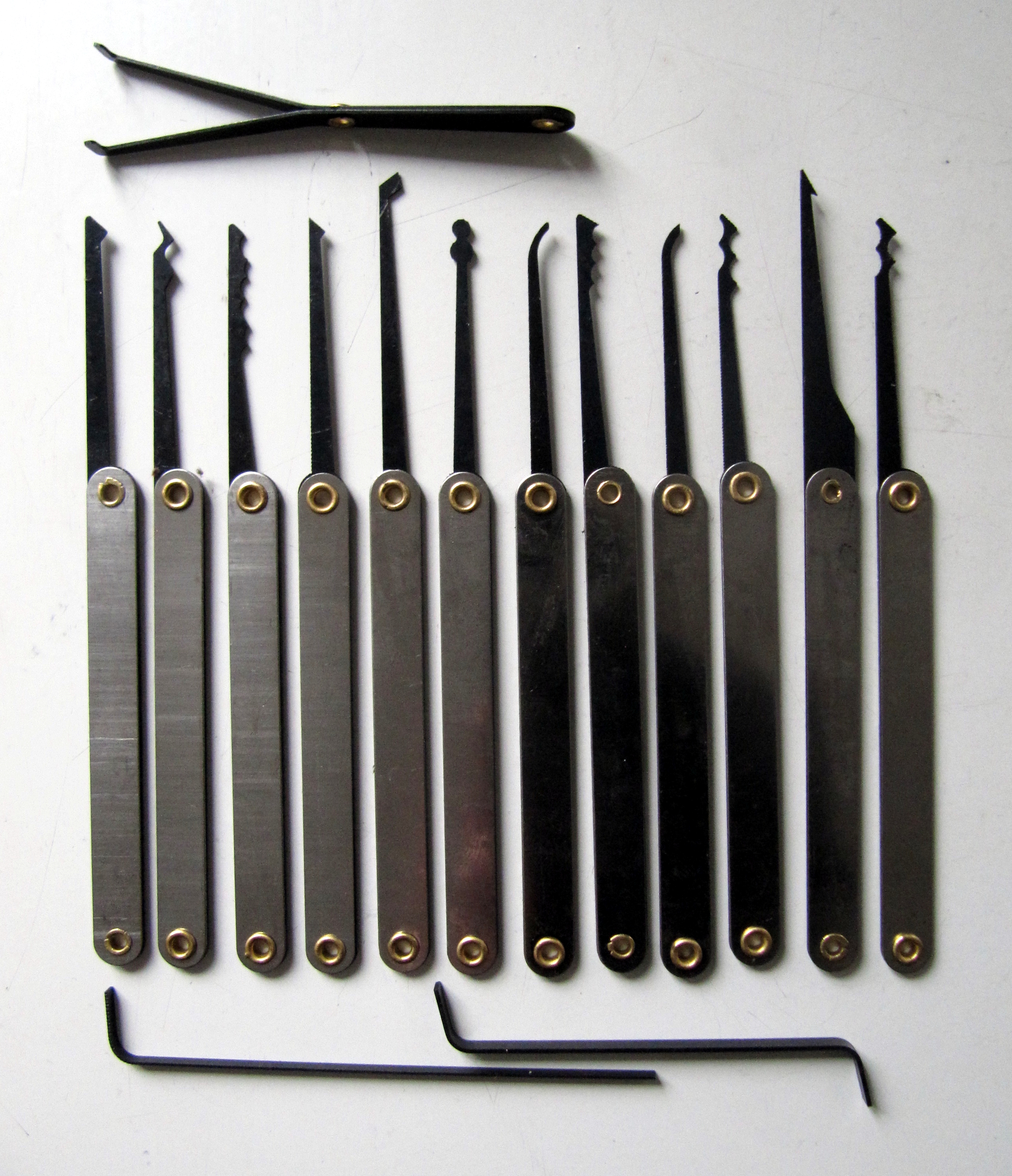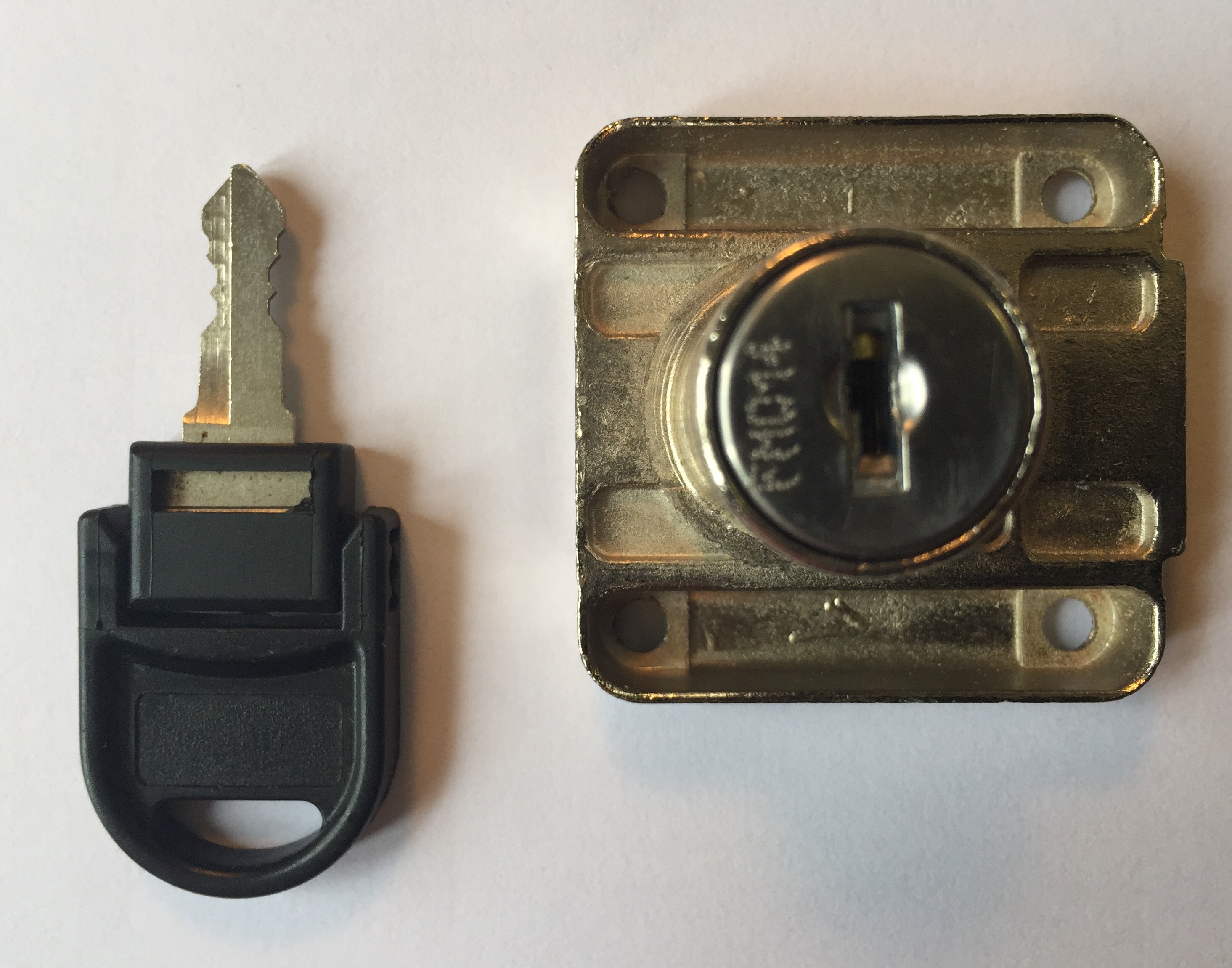|
Lock Picking
Lock picking is the practice of unlocking a Lock (security device), lock by manipulating the components of the lock device without the original key. Although lock-picking can be associated with Intention (criminal law), criminal intent, it is an essential skill for the legitimate profession of locksmithing, and is also pursued by law-abiding citizens as a useful skill to learn, or simply as a hobby (locksport). In some countries, such as Japan, lock-picking tools are illegal for most people to possess, but in many others, they are available and legal to own as long as there is no intent to use them for criminal purposes. History Lock (security device), Locks by definition secure or fasten something with the intention that access is possible only with the matching key. Despite this, criminal lock picking likely started with the first locks. Famed locksmith Alfred Charles Hobbs said in the mid-1800s: Professional and recreational lock picking also has a long history. Ki ... [...More Info...] [...Related Items...] OR: [Wikipedia] [Google] [Baidu] |
Lock Bumping
Lock bumping is a lock picking technique for opening a pin tumbler lock using a specially crafted bump key, rapping key or 999 key. A bump key must correspond to the target lock in order to function correctly. History A US patent first appears in 1928 by H. R. Simpson called a rapping key.''High Security Mechanical Locks - An Encyclopaedic Reference'' published by Graham W. Pulford 2007, p. 19 In the 1970s, locksmiths in Denmark shared a technique for knocking on a lock cylinder while applying slight pressure to the back of the lock plug. When the pins would jump inside of the cylinder, the plug would be able to slide out freely, thus enabling the locksmith to disassemble the lock quickly. The use of a bump key was not introduced until some time later and was first recognized as a potential security problem around 2002–2003 by Klaus Noch, who brought it to the attention of the German media. After further examination of the procedure, a white paper was drafted in 2005 by Barr ... [...More Info...] [...Related Items...] OR: [Wikipedia] [Google] [Baidu] |
Snap Gun
Snap or SNAP may refer to: Arts and entertainment * ''Snap'' (film), the initial release title for the 2013 film ''Enter the Dangerous Mind'' * '' The Stanly News and Press'', a newspaper in Albemarle, North Carolina, US * "Snap" (''Duty Free''), a 1984 TV episode Games and sports * Snap (gridiron football), the start of a play in gridiron football * Scalable Network Application Package, an online gaming platform * ''Pokémon Snap'', a 1999 Japanese video game **'' New Pokémon Snap'', the 2021 sequel * Snap, any putdown used in the Dozens Card games * Snap (card game) * Strong notrump after passing, a contract bridge bidding convention Music * Snap music, a hip-hop subgenre * Snap!, a German dance music group * '' Snap!'' (album), by the Jam, 1983 * "Snap" (song), 2022 * "Snap", a song by Kevin Federline from '' Playing with Fire'', 2006 * "Snap", a song by Nav from '' Bad Habits'', 2019 * "Snap", a song by Slipknot from '' Slipknot'', 2009 reissue * "Snap!", a song from ... [...More Info...] [...Related Items...] OR: [Wikipedia] [Google] [Baidu] |
Master Lock
Master Lock is an American company that sells padlocks, combination locks, safes, and related security products. Now a subsidiary of Fortune Brands Innovations, Master Lock Company LLC was formed in 1921 by locksmithing, locksmith-inventor Harry Soref and is headquartered in Oak Creek, Wisconsin. In 1970, the company was purchased by American Brands from Soref's heirs. American Brands was later renamed to American Brands, Fortune Brands, which then split on October 3, 2011, to create the Fortune Brands Home & Security company and the beverages company Suntory Global Spirits, Beam Inc. (which was then soon purchased by Suntory). History 20th century Before co-founding the company in 1921, Harry Soref had been a traveling locksmith in the U.S., Canada, and Mexico,Harry E. Soref Univ. Wisconsin Milwaukee Sheldon B. Lubar Sc ... [...More Info...] [...Related Items...] OR: [Wikipedia] [Google] [Baidu] |
Lock Bumping
Lock bumping is a lock picking technique for opening a pin tumbler lock using a specially crafted bump key, rapping key or 999 key. A bump key must correspond to the target lock in order to function correctly. History A US patent first appears in 1928 by H. R. Simpson called a rapping key.''High Security Mechanical Locks - An Encyclopaedic Reference'' published by Graham W. Pulford 2007, p. 19 In the 1970s, locksmiths in Denmark shared a technique for knocking on a lock cylinder while applying slight pressure to the back of the lock plug. When the pins would jump inside of the cylinder, the plug would be able to slide out freely, thus enabling the locksmith to disassemble the lock quickly. The use of a bump key was not introduced until some time later and was first recognized as a potential security problem around 2002–2003 by Klaus Noch, who brought it to the attention of the German media. After further examination of the procedure, a white paper was drafted in 2005 by Barr ... [...More Info...] [...Related Items...] OR: [Wikipedia] [Google] [Baidu] |
Newton's Cradle
Newton's cradle is a device, usually made of metal, that demonstrates the principles of Momentum, conservation of momentum and conservation of energy in physics with swinging Sphere, spheres. When one sphere at the end is lifted and released, it strikes the stationary spheres, compressing them and thereby transmitting a pressure wave through the stationary spheres, which creates a force that pushes the last sphere upward. The last sphere swings back and strikes the stationary spheres, repeating the effect in the opposite direction. Newton's cradle demonstrates conservation of momentum and energy. The device is named after 17th-century English scientist Isaac Newton, Sir Isaac Newton and was designed by French scientist Edme Mariotte. It is also known as Newton's pendulum, Newton's balls, Newton's rocker or executive ball clicker (since the device makes a click each time the balls collide, which they do repeatedly in a steady rhythm). Operation When one of the balls at the e ... [...More Info...] [...Related Items...] OR: [Wikipedia] [Google] [Baidu] |
Bumping Key
Lock bumping is a lock picking technique for opening a pin tumbler lock using a specially crafted bump key, rapping key or 999 key. A bump key must correspond to the target lock in order to function correctly. History A US patent first appears in 1928 by H. R. Simpson called a rapping key.''High Security Mechanical Locks - An Encyclopaedic Reference'' published by Graham W. Pulford 2007, p. 19 In the 1970s, locksmiths in Denmark shared a technique for knocking on a lock cylinder while applying slight pressure to the back of the lock plug. When the pins would jump inside of the cylinder, the plug would be able to slide out freely, thus enabling the locksmith to disassemble the lock quickly. The use of a bump key was not introduced until some time later and was first recognized as a potential security problem around 2002–2003 by Klaus Noch, who brought it to the attention of the German media. After further examination of the procedure, a white paper was drafted in 2005 by Barr ... [...More Info...] [...Related Items...] OR: [Wikipedia] [Google] [Baidu] |
Rake Lock Picks
Rake may refer to: Common meanings * Rake (tool), a horticultural implement, a long-handled tool with tines * Rake (stock character), a man habituated to immoral conduct * Rake (poker), the commission taken by the house when hosting a poker game * Raking fire, fire along the axis of a ship in naval warfare Science and technology * Rake receiver, a radio receiver * Rake (geology), the angle between a feature on a bedding plane and the strike line in geology Transport * Rake, the caster angle of a bicycle or motorcycle * Rake, the difference between the front and rear ride heights of a car * Rake (train), a line of coupled passenger coaches, or freight wagons, or railcars (excluding the locomotive) that typically move together Mathematics and computing * Rake (angle), a mathematical definition * Rake (cellular automaton), a cellular automaton pattern that moves while regularly emitting spaceships * Rake (software), a variant of the ''make'' program coded in the Ruby programming ... [...More Info...] [...Related Items...] OR: [Wikipedia] [Google] [Baidu] |
Torque
In physics and mechanics, torque is the rotational analogue of linear force. It is also referred to as the moment of force (also abbreviated to moment). The symbol for torque is typically \boldsymbol\tau, the lowercase Greek letter ''tau''. When being referred to as moment of force, it is commonly denoted by . Just as a linear force is a push or a pull applied to a body, a torque can be thought of as a twist applied to an object with respect to a chosen point; for example, driving a screw uses torque to force it into an object, which is applied by the screwdriver rotating around its axis to the drives on the head. Historical terminology The term ''torque'' (from Latin , 'to twist') is said to have been suggested by James Thomson and appeared in print in April, 1884. Usage is attested the same year by Silvanus P. Thompson in the first edition of ''Dynamo-Electric Machinery''. Thompson describes his usage of the term as follows: Today, torque is referred to using d ... [...More Info...] [...Related Items...] OR: [Wikipedia] [Google] [Baidu] |
Wafer Tumbler Lock
A wafer tumbler lock is a type of Lock (security device), lock that uses a set of flat wafers to prevent the lock from opening unless the correct key is inserted. This type of lock is similar to the pin tumbler lock and works on a similar principle. However, unlike the pin tumbler lock, where each pin consists of two or more pieces, each wafer in the lock is a single piece. The wafer tumbler lock is often incorrectly referred to as a disc tumbler lock, which uses an entirely different mechanism. Early development The earliest record of the wafer tumbler lock in the United States is a patent from 1868 by Philo Felter. Manufactured in Cazenovia, New York, Cazenovia, New York, it used a flat double-bitted key. Felter's lock was patented only three years after Linus Yale, Jr. received a patent for his revolutionary pin tumbler mortise lock, considered to be the first pin tumbler lock of the modern era. That lock featured a flat steel key, referred to as a "feather key" because of t ... [...More Info...] [...Related Items...] OR: [Wikipedia] [Google] [Baidu] |



